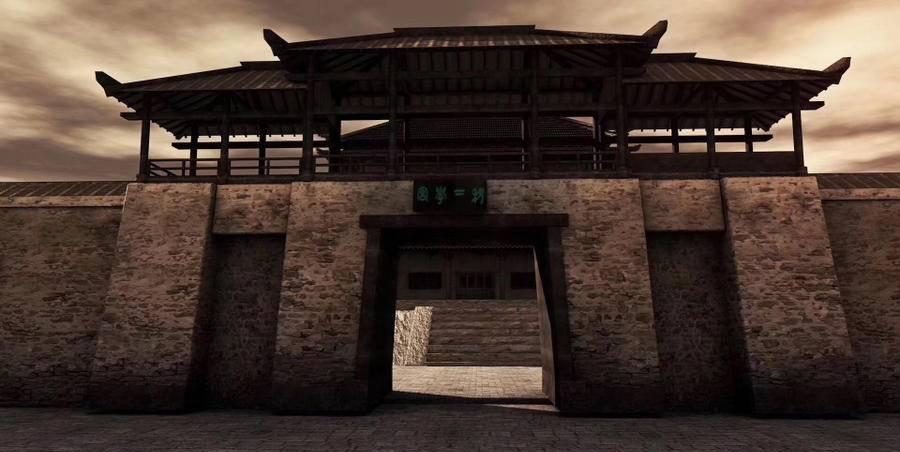□ Natsuko-hye
As the first historical and cultural documentary with the theme of the Minoru Xuegong in China, "The Palace of the Warring States University Hall of The Jixia Xuegong" runs through ancient and modern times, showing the great contribution of Qilu ideology and culture to Chinese civilization and even world civilization from the perspective of China and the world, and embodying the long-standing and endless life of Chinese civilization.
The success of documentaries on historical themes depends largely on whether they can create an impressive, vivid, three-dimensional, and multi-faceted image of historical figures.
Looking back at the many scholars and sages emerging in the Palace of Jixia, The images of Mencius, Xunzi, Chun Yujie, Li Si, han Fei and so on have their own characteristics, which not only form a sharp contrast in academic views, but also highlight the complexity of their personalities in the portrayal of the details of life. Xunzi still adhered to Confucianism in that war-torn Warring States era, adhering to benevolence and ethics, but Li Si and Han Fei, as students of Xunzi, gradually turned to the idea of the Fa, believing that the idea of the Fa was more suitable for the era of the collapse of the liturgy. Li Si and Han Fei were both xunzi's students, representatives of the same legal family, and later both assisted the Qin king In the qin kingdom to unify the six kingdoms, but Li Si and Han Fei were also very different. Li Si came from a clerical official, and his view of things was whipped into the room, and he saw that the rats in the granary were eating hoarded corn, living in the big house, and no one and the dogs were disturbed, so Li Si sighed: "Whether a person is out of breath or not, like a mouse, is determined by his own environment." Han Fei was born in an aristocratic family, he stuttered slightly, was more proficient in writing than eloquence, and was finally framed to death by Li Si.

There are many differences between Sengoku Gonden No.D. Minoru Gakugu and traditional documentaries. For historical documentaries, "reproduction" is the rediscovery and collation of information from the past. The traditional practice is to use some empty lenses and historical documents to form a text with explanatory words, and many rely on abstract explanatory words to narrate history, which is relatively pale and weak.
"Sengoku University Hall of Minoru Gakumi" breaks through the traditional documentary shooting method, and conveys the heavy sense of history and profound cultural connotation with the special effects of ink painting, which attracts people's imagination. The documentary also uses character silhouettes to leave the audience with space for interpretation and imagination, uses computer-generated 2D and 3D animations to break through the limitations of time, place, manpower and material resources to get close to the historical situation at that time, and transforms the historical and academic Qilu culture into forms and contents that are popular with the public through a variety of modern technical means such as delay, and reproduces those historical moments that cannot be restored in the way that is closest to the film, reflecting the truth of artistry.
In addition, the film integrates expert interviews and situational interpretations into the telling of historical stories. When stating historical materials, especially the dialogue of historical figures, the collision of ideas between different characters is performed through character playing, scene reproduction, etc., so as to maximize the restoration of the scene at that time, make the picture more concrete, and erase the mystery of history and the white snow of Yangchun. A few short pictures will vividly and vividly convey the boring historical documents to the audience in the language of the lens, narrowing the psychological distance between the audience and the history and culture, and making it more convenient for the audience to accept.
Narrative structure is a crucial part of documentary creation, which is of great significance to the performance and expression of documentary films. "Sengoku University Hall no Minoru Gakuen" adopts a scattered narrative, "using small incisions and serial methods to form a scattered perspective, and different angles of the same event and different aspects of the same character are listed into chapters." At the beginning of each episode, the film selects a classic scene in this episode for scenario interpretation, sets up suspense, and also paves the way for the next plot to unfold. For an important historical node, the film chooses 3D animation, sand painting, scene interpretation, historical documents, expert reviews and other forms to present. At the end of each episode, there is a paragraph that summarizes the content of this episode and foreshadows the content of the next episode, which is interlocked and compact. In the shortest possible time, multi-angle, multi-faceted transmission of the richest information to the audience, and fully take into account the internet age of communication and audience viewing habits, opened up a new model.
On the surface, "The Palace of The Warring States University Hall of Jixia Xuegong" is about the rise and fall of China's first institution of higher learning, but in fact it tells the fate of many scholars in the Palace of Jixia Xuegong, reflecting the flow of the hundreds of sons, especially Confucianism, and can even be said to be a history of Confucianism and Chinese civilization.